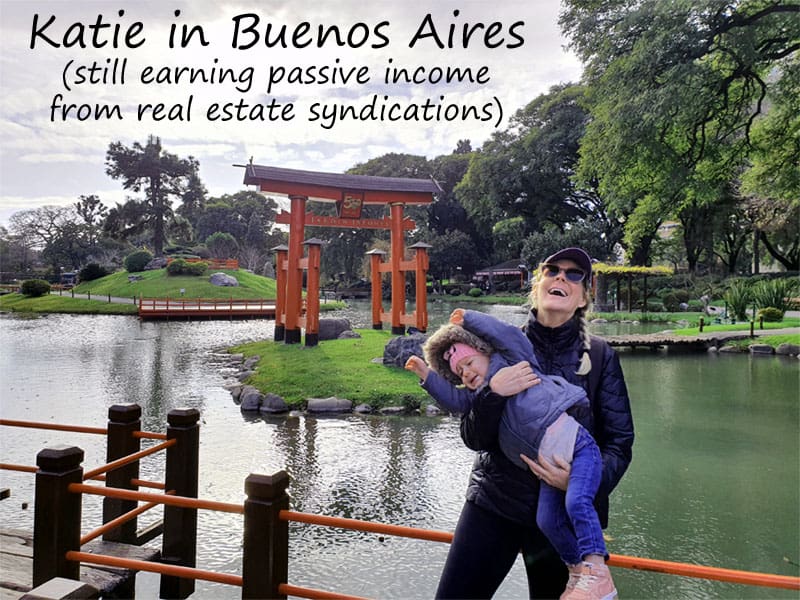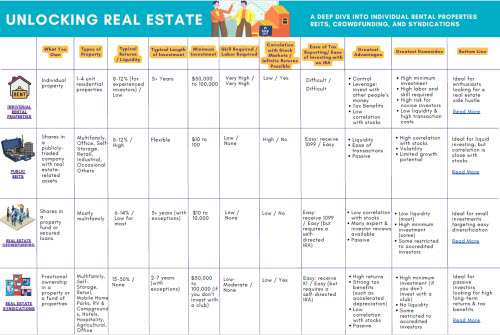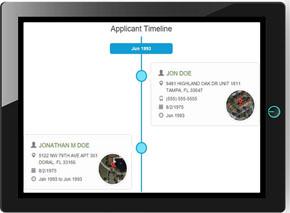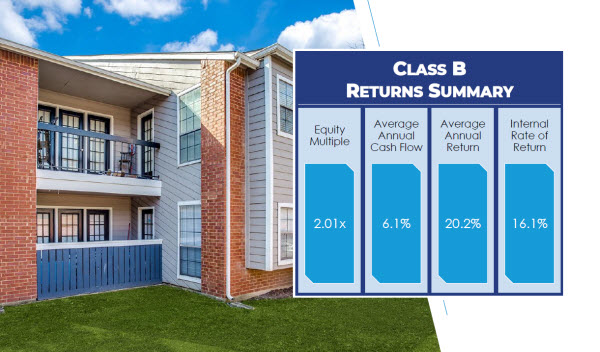The Big Picture On How To Invest In Real Estate With Self-Directed IRA:
-
- You can invest in almost any type of real estate by opening a self-directed IRA with a custodian.
- It’s much easier to invest in passive real estate investments (such as real estate syndications or crowdfunding investments) with an SDIRA than buying properties directly.
- If you finance a rental property bought under an SDIRA, only part of the property qualifies for tax benefits.
Disclaimer
The information provided on this website is for general informational purposes only and should not be construed as legal, financial, or investment advice.
Always consult a licensed real estate consultant and/or financial advisor about your investment decisions.
Real estate investing involves risks; past performance does not indicate future results. We make no representations or warranties about the accuracy or reliability of the information provided.
Our articles may have affiliate links. If you click on an affiliate link, the affiliate may compensate our website at no cost to you. You can view our Privacy Policy here for more information.

Ever wish you could invest in real estate tax-free through your retirement accounts?
You can.
And it’s not hard, either. Look no further than Martha’s story of retiring to Europe with a single investment property. She owned that rental property under a self-directed IRA (SDIRA).
If that story focused on the specifics of her rental property investment, this one drills into how to invest in real estate using a self-directed IRA. And not just with rental properties but also with passive real estate investments.
Here’s to avoiding taxes — legally.
What Is A Self-Directed Individual Retirement Account (SDIRA)?
A Self-Directed Individual Retirement Account or SDIRA is an IRA account that you, as the owner, can directly manage. SDIRA allows account owners to use their retirement money for alternative investments instead of the typical savings account setup.
Benefits Of SDIRAs
Having full control over your IRA account yields some benefits, including:
| Benefit | Description |
|---|---|
| Diversification | Real estate investments can provide a diversification benefit to your retirement portfolio, reducing the risk associated with having all your assets in traditional financial products like stocks and bonds. |
| Potential for High Returns | Real estate can offer higher returns than traditional investments. |
| Tax Advantages | SDIRAs offer tax-deferred or tax-free growth on investments, including real estate. This means capital gains, rental income, and other profits can grow without immediate tax implications. |
| Control Over Investments | Investors have full control over their investment choices, allowing for targeted investments in specific properties or real estate sectors. |
| Income Generation | Rental properties can provide a steady income stream that contributes to the IRA’s growth, which is particularly beneficial during retirement. |
| Protection Against Inflation | Real estate is often considered a hedge against inflation, as property values and rents tend to increase with inflation, potentially preserving the purchasing power of your investment over time. |
| Physical Asset | Real estate is a tangible asset, which some investors prefer over intangible assets like stocks or bonds. Tangible assets can feel more secure and less volatile in certain market conditions. |
| Use of Leverage | While more complex and subject to strict rules, it’s possible to use non-recourse loans within an SDIRA to purchase real estate, allowing for the potential of larger investments than might be possible with available cash alone. |
| Tax-Free Profits | If the SDIRA is structured as a Roth IRA, all gains, including those from real estate, can be withdrawn tax-free in retirement, assuming certain conditions are met. |
| Estate Planning Benefits | Real estate held in an SDIRA can be passed to beneficiaries after the account holder’s death, potentially offering a tax-efficient way to transfer wealth. |
5 Ways to Invest in Real Estate with an SDIRA
So, let’s talk about how you can invest in real estate with your self-directed IRA.
You could invest in real estate investment trusts (REITs) in a standard brokerage IRA. However, REITs are correlated with stocks too closely to offer much diversification benefit.
Some investors open a self-directed IRA to invest in real estate to expand their options. But some of those options prove easier than others.
Starting from easiest to most difficult, consider these options when investing in real estate with an SDIRA.
Real Estate Crowdfunding: Fractional Shares in Rentals
“Real estate crowdfunding” covers many types of investments. The simplest to understand is fractional ownership in rental properties.
You buy a small percentage of the property, becoming one of many owners of the LLC that owns that property. You collect your share of the rental income; when the property sells, you get your share of the profits.
The oldest and largest platform for fractional ownership in rentals is Arrived. It allows non-accredited investors and features a low minimum investment of $100. The downside: once you buy shares in a property, you’re stuck holding them until the property sells in five to seven years.
Two other platforms have since come along that offer a secondary market for selling shares. Check out Ark7 and Lofty as newer platforms with more liquidity than Arrived.
You can invest in real estate on any of these with a self-directed IRA.
Real Estate Crowdfunding: Equity Funds
Rather than buying fractional ownership in a single property, you can invest in a fund that owns many properties. Some meet the legal definition of a REIT; others don’t.
On the plus side, you get broader diversification, which helps spread your risk. You also get less fine-tuned control over what you invest in.
With an SDIRA custodial account, you can buy private REIT shares such as Fundrise and Streitwise (I own shares in both, for full disclosure). Both allow non-accredited investors to participate.
Real Estate Crowdfunding: Secured Debt
You can also invest in loans secured by real property. Unlike equity investments — where you own a percentage of the property — these typically pay a fixed interest rate.
I personally like GroundFloor because you can invest as little as $10 in each loan. You can choose which loans to fund based on risk grading, interest, and the property and borrower details. Most of these are short-term investments, under a year, so it doesn’t lock up your funds indefinitely.
Groundfloor also offers fixed-interest notes, where you lend the company money directly. Other examples of note investments include EquityMultiple’s Alpine Notes and Norada Real Estate’s notes.
Private Equity Real Estate Syndications & Funds
Coming full circle back to fractional ownership, you can invest in private equity real estate with your SDIRA.
In a real estate syndication, you own fractional shares in a commercial property such as an apartment complex or mobile home park. Alternatively, you can also buy shares in a private equity real estate fund that owns many properties or debts secured by real estate.
Most real estate syndications and funds target high returns in the 15-30% range. You get all the benefits of real estate ownership — cash flow, appreciation, and tax advantages — with none of the headaches.
So what’s the catch?
Like most real estate crowdfunding platforms, private equity real estate is usually a long-term commitment of three to seven years, with no liquidity. However, the greater catch is the high minimum investment, typically $50,000 – $100,000.
Unless that is, you invest through a real estate investment club. Like, say, our Co-Investing Club lets each member invest $5,000 in any given deal. And yes, members can invest with SDIRA funds.
Just sayin’.
Direct Ownership: Rental Properties
Investing in rental properties in your self-directed IRA involves some extra complications compared to real estate crowdfunding investments. However, real estate investors also get more control over direct property ownership and management.
The greatest challenge with buying rental properties with your self-directed IRA is the high cost of entry. As of 2024, you can only contribute $6,500 per year in an IRA ($7,500 for 50+ taxpayers). Even if you borrow a rental property mortgage, it would still take years to contribute enough to cover a 20% down payment and closing costs.
And that says nothing of the complications of unrelated business income tax (UBIT), and having to pay taxes on the financed portion of your property. More on that shortly.
Because investing in an SDIRA rental properties is much more complicated than the passive investments outlined above, we’ll illustrate it with a case study.
Case Study: Buying a Rental Property with an IRA
Martha and her husband Terry (who asked that we not share their last name) decided to use most of their retirement account funds to buy a rental property.
“The 2008 crash was a wake-up call for us. Leaving our retirement savings in the stock market and hoping for the best was too risky. Somebody dreamed up derivatives and rode that train ‘til it crashed and brought down a huge portion of the economy with it. Our retirement plan took a hit like everyone else. And we were helpless fools in the whole debacle.
“Now real estate was something tangible; something we understood much better than the financial markets. The returns are based on the local market driven demand for housing.”
Martha and Terry decided it was time to diversify. They followed these steps to buy a rental property with an IRA.
Step 1: Find a Custodian
With a self-directed IRA, you need a custodian or trust company to administer it for you and comply with IRS rules.
“The first thing we did was find a trust company that would agree to handle it. The trust company ‘manages’ the IRAs for us. We set up IRAs with them; they then invested where we told them to invest.
“It’s important to understand the relationship with the trust company – they make their money by charging a percent of the value of the trust. And you need to be careful what you are signing up for! It’s a long-term relationship with that company and a serious financial commitment.”
I asked Martha about her tips for other real estate investors thinking about a self-directed IRA, and which trust company she used. “I guess the most valuable tip is to shop for a trust company before you start looking at properties or making investment decisions. The choice of a custodian is important and should not be part of the rush or timeline when buying a property.
“We are very happy with the service that our trust company gives us (Peak Trust Company). Their fees seem reasonable.”
Considerations For Finding A Custodian
Just as Martha implies, finding a custodian with a reasonable fee is important. However, that’s not the only thing you need to look for. Here are other things to consider:
-
- Type of custodian and specialization: Some custodians specialize in different investments. Make sure you find one that fits your intended goal.
- Quality of service: Find a custodian that provides timely responses, efficient processes, great problem-solving, and extensive and transparent documentation and reports.
- Fees and charging structure: Do you want to move your investment around a bit, or just find a particular one and keep it there? Knowing how your custodian charges transaction fees is important to know once you figure out your strategy.
- Checkbook control vs. Full-service: If you want more control of your account, you’ll be better served with an SDIRA custodian with checkbook control. Otherwise, go full-service and let them handle all the transactions.
Try Millennium Trust Company as a reputable custodian for your self-directed IRA, who’s familiar with real estate investments. They work closely with Fundrise as SDIRA partners.
With us so far? You sign up with a trust company, they create the self-directed IRA for you, then you rollover some or all of the money from your existing IRA, 401(k), or other tax-deferred retirement account to your new self-directed IRA.
If you’ve ever changed jobs and had to rollover your 401(k) funds from your previous employer to a new one, or to an IRA, you know how the process goes. It’s relatively easy; they give you a form to fill out, and you transfer the funds.
Step 2: Setting Up a Company to Invest Through
Own your rental properties under an LLC? It’s basically that simple.
“We set up an LLC to own and lease real estate. My husband’s self-directed IRA owns a percentage of the LLC, and my self-directed IRA owns a percentage of the LLC.
“Setting up the LLC is pretty straightforward. We had a law firm help fine tune the language of the operating agreement.” It’s worth noting that many people form LLCs independently, depending on their comfort level.
You file Articles of Organization with your state’s business licensing administration. It’s not “rocket surgery,” as my ex-girlfriend used to say.
“Then we set up a bank account, got a tax ID number and we were in business! The trust company can then cut the checks to buy the property.”
To recap: you open an account with a trust company to create a self-directed IRA, and transfer money to it. Then, you create an LLC to buy the rental property under so that your self-directed IRA has something to invest in!
Step 3: Financing a Rental Property in a Self-Directed IRA
Martha and Terry Robinson did not finance the rental property they bought in their self-directed IRA; they paid cash.
But that doesn’t mean you can’t use financing to buy rental properties under your self-directed IRA.
Borrowing money to buy real estate in your self-directed IRA is nearly identical to borrowing otherwise. You secure a loan from a mortgage that does landlord loans or from a private lender (whether a company or individuals, such as friends or family).
But if you do finance your rental properties in a self-directed IRA, there are two important points you need to understand:
First, the loan must be a “non-recourse” loan to finance investment properties bought under a self-directed IRA. That means the borrower is not personally liable for the debt; the lender can only go after the collateral — the rental property — in the event of a default.
Not every lender will agree to that. Definitely a question to ask lenders early in the process if you’re considering buying real estate using a self-directed IRA!
The second point you need to know about financing real estate in a self-directed IRA is that the property’s revenue is only partially tax-sheltered. It gets complicated quickly, but the short version is that only the “non-financed portion” of the property gets the tax benefits.
Financing Example in an SDIRA
To use a simple example, say you buy a rental property under your self-directed IRA for $100,000, and you finance half of the purchase ($50,000). The IRS only considers the half you paid cash for as the tax-free portion. So, half of your cash flow would be tax-free, and you would pay taxes normally on the other half.
Talk to your trust company about the details of how this exactly works from a year-to-year tax perspective. It’s above my pay grade.
Whether you borrow money or stick to your own cash in your self-directed IRA to buy the rental property, your LLC now owns the rental property. Congratulations!
How Rental Cash Flow Works in a Self-Directed IRA
What happens to the cash flow from the rental property?
The short version: The tax-free rental income must stay in your SDIRA until you reach at least 59 ½. Otherwise, it counts as an early distribution, and you must pay both taxes and penalties on it.
I’ll let Martha explain, in her own words, how their cash flow works in their LLC and self-directed IRA:
“The money flows like this: We’ve hired a property management company to manage the apartments, including leasing, maintenance, collecting rents, paying bills, etc. Once per month, the property management company collects the rent and deposits the net proceeds into the LLC bank account. We control that account.
“Then once per month, the LLC pays a dividend to Terry’s IRA and my IRA at the trust company.”
Cash flow from the investment property goes to the self-directed IRA. Since you control what the self-directed IRA invests in (hence the name), you could use it to pay down debt on the rental property (if you have any), or invest in anything else: equities, private notes, even more rental properties!
Now, if you’re a young person not yet retired, that would be the end of the discussion. But Martha and her husband Terry have now retired, and withdraw money to live on from their self-directed IRA.
“The trust company then turns around and sends us IRA disbursements once per month. The trust company does the tax withholding for the IRA disbursements and issues the 1099’s at the end of the year.”
Market Fluctuation Risks And How They Affect Your SDIRA Real Estate Investments
Just because you’re using a self-directed IRA account for real estate doesn’t mean you don’t get your share of market risks.
Of course, real estate investments are at the mercy of some factors outside your control. Interest rate changes can help or hinder your SDIRA growth, depending on what changes occur and when.
Regulatory changes are also a factor. Taxes for local properties can change and rental regulations can upend your carefully managed properties.
Last but not least is the macroeconomics of real estate. If the market is down, then demand for rental properties decreases, which may result in low occupancy rates.
The good news is that you can mitigate some of these factors by applying the following:
-
- Diversify, diversify, diversify
- Do your due diligence
- Leverage professional help
- Keep up to date on regulatory and economic changes
- Focus on the long term (this is for your retirement, after all)
- Actively manage your properties
- Take advantage of all your tax benefits
- Watch and ride market cycles
Separation of Personal & LLC Funds
“One thing we are very cognizant of is that the LLC account, funds, cash flow, etc. must always be completely separate from anything else we are doing. Funds must never, ever, ever be used by us directly or co-mingled.”
The IRS doesn’t have a sense of humor about commingling tax-protected funds in a self-directed IRA with personal funds. They will rain fire and brimstone down upon thee if you do it.
“We manage our LLC and rental property for the benefit of our IRAs. Not for our personal benefit.”
It may seem like an odd distinction, but it’s one worth making.
“We grossed $108,000 last year, and after paying all the expenses of taxes, management, maintenance, utilities, etc., we netted $63,000.”
That money went into their LLC bank account, then to their self-directed IRA, and then was disbursed back out to them as retirement funds to live on. Easy peasy.
Should I Open a Self-Directed IRA?
Should you invest in a rental property using a self-directed IRA?
Maybe.
First, it’s a bit more complicated than just setting up a standard IRA with your investment banker and investing in index fund ETFs. If the words “trust company” make your eyes cross, maybe you’re better off investing in real estate separately and keeping a conventional IRA for now.
To be frank, that’s what I do. Real estate comes with plenty of inherent tax benefits, from depreciation to rental property tax deductions. Besides, I invest in stocks in addition to real estate, so why not hold some of those stocks in my IRA?
Another issue is that it can be tough to find vendors who are comfortable working with a self-directed IRA. “One of the biggest challenges is that not many folks do this, so getting accountants, contractors, property managers, banks, etc. up to speed is sometimes a lengthy process.”
Then there’s the commingling issue. Granted, It’s not like the money is going to wander from your LLC bank account to your personal checking account on its own! But that doesn’t mean everyone has the discipline to keep the money separate.
However, if you struggle with budgeting and controlling your spending, it can be tempting to pull money from anywhere it seems available. That spells trouble for commingling funds.
Final Thoughts
For all that, a self-directed IRA is an incredibly flexible way to invest in real estate for retirement. You get the full tax benefits of an IRA, but the ability to invest in rental properties, private notes, or almost anything else you choose. Martha has been thrilled with it.
“We couldn’t be happier with how it’s performed. Even if the real estate market goes into another slump, we are not worried. We do not have to service a loan; we can just lower rents. Oh well.”♦
Have you ever considered investing in real estate with a self-directed IRA? What’s held you back from SDIRA real estate investing?




























Great post! Investing in real estate through your IRA is a good move if you know what you’re doing. Kudos to you for simplifying this.
Thanks Jazreen, much appreciated!
How is this not “self dealing” (a definite no-no with SDIRAs)?
Hi Cathie, while the legal details get nuanced quickly, the SDIRA owns the LLC, and the trust company manages the SDIRA and all funds and cash flow.
If this is something you’re interested in exploring, I highly recommend you speak with a trust company about the nuts and bolts of how it must be legally structured.
Thank you for this great article! And Strasbourg is really a great city. We are from Freiburg and are only a few kilometers away!
Best regards,
Udo
Thanks Udo! I haven’t been to Strasbourg myself yet but I’d like to visit it sooner rather than later!
I didn’t know this was possible! I might need to look into creating my own self-directed IRA for real estate investing, this would definitely beat the heck out of my current IRA investments.
Great article Brian!
Thanks Chelsea, and glad to hear it was useful! Most real estate investors don’t jump through the hoops necessary to invest in real estate with a self-directed IRA, but it can be extremely advantageous tax-wise.
Best of luck with your real estate investing!
We’ve taken the plunge, bought a property to rent, the house is owned by our LLC, which is owned by our SDIRAS…now, as we set up the VRBO listing we’re faced with tax question re: collecting tax from renters. (seems to be optional but I don’t want to choose wrong). Since this property is earning money for the benefit of an IRA, a tax-deferred vehicle, do we need to collect taxes? If so, do we submit each year in connection with the income the LLC property brought in? I thought I’d figured out all the nuts and bolts,before we bought the property but I’m stumped again.
Hi Elizabeth, are you referring to collecting local hotel taxes that your municipality requires you to pay? If so, that comes down to whether you want to pass along those costs directly or indirectly in the form of higher rates.
Generally a business must comply with the tax structures relevant to the business jusrisdiction.
So – if your business sells things in a state with sales tax – it should collect that sales tax ON BEHALF OF THE JURISDICTION and then remit the sales tax collected to the jurisdiction.
YOUR BUSINESS is not the taxing authority. It simply acts to collect that tax on behalf of the authority.
For property taxes, etc – your business will collect and remit both ad valorum taxes (such as your property tax) and use taxes (such as ‘hospitality’ and ‘sales’ taxes) to the relevant authorities.
NOTE: these are distinct from any operating or income taxes, which are based on profit…
Your business would have a NET position after these taxes/fees that would then be available to fund its other operating costs, dividends, and profits (and pay any income/corp taxes that are relevant).